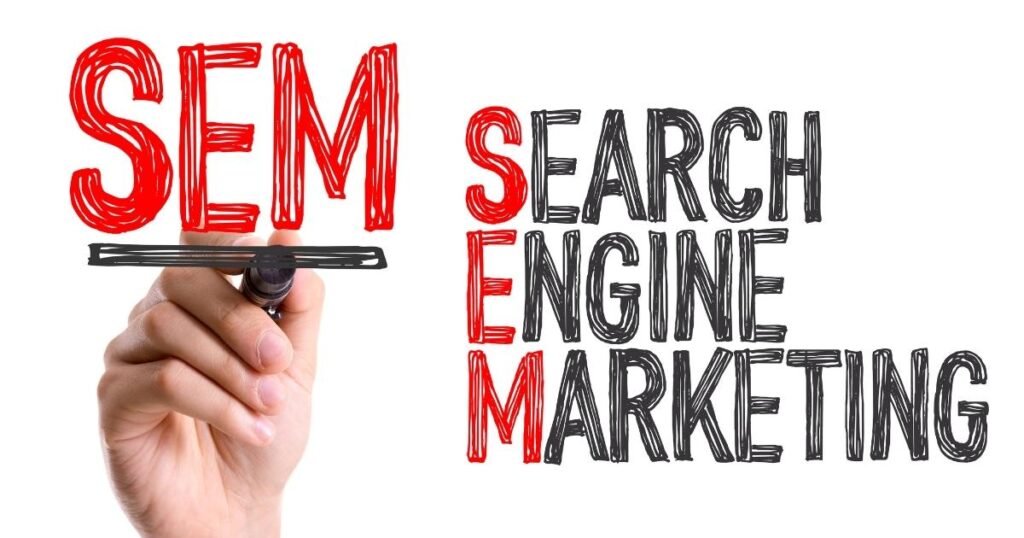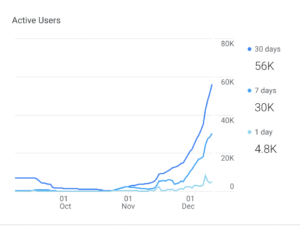Search Engine Marketing (SEM) is a type of online marketing that uses search engines to generate leads and sales. SEM works by improving the visibility of a website in search engine results pages (SERPs), thereby driving more traffic to the site.
SEM involves both paid and organic methods to improve a website’s visibility in SERPs. Paid SEM, or pay-per-click (PPC) advertising, involves buying ads on search engines that will appear when certain keywords are searched for. Organic SEM, or search engine optimization (SEO), is the process of improving a website’s ranking in SERPs by optimizing the site’s content and structure.
Both paid and organic SEM can be effective in driving traffic to a website. However, SEO is generally considered to be more sustainable and long-term than PPC advertising.
SEM can be an expensive marketing strategy, so it’s important to set a budget and track results to ensure that the investment is worthwhile.

What is a Search Engine?
A search engine is a powerful tool that helps users find the information they need on the internet. Search engines use a variety of factors to rank websites and determine which results are the most relevant to a user’s query. Search Engine Marketing (SEM) is the process of using paid advertising to improve a website’s visibility in the search engine results pages (SERPs). SEM can be an effective way to drive traffic to a website and improve its visibility in search engines.
When a user types a query into a search engine, the search engine uses algorithms to determine which websites should appear in the results. The factors that search engines use to rank websites include things like keyword density, backlinks, and website content. Search engine marketing is the process of using paid advertising to improve a website’s position in the search engine results pages. SEM can be an effective way to drive traffic to a website and improve its visibility in search engines.
There are a variety of different SEM methods that businesses can use to improve their visibility in search engines. Search engine optimization (SEO) is the process of optimizing a website to improve its position in the search engine results pages. This can be done by improving the website’s content, structure, and on-page factors like keyword density and backlinks. Pay-per-click (PPC) advertising is a type of SEM that allows businesses to bid on keywords and have their ads appear on the search engine results pages when users search for those keywords. Businesses can also use other SEM methods like display advertising and social media marketing to improve their visibility in search engines.
Search engine marketing is a powerful tool that can help businesses improve their visibility in search engines. By using SEM methods like SEO and PPC advertising, businesses can improve their ranking in the search engine results pages and drive more traffic to their website.
Page Rank: The Basics
Page rank is a measure of how important a page is in relation to all other pages on the web (a little more on that later). Page rank is determined by a number of factors, including:
The quality of the page itself. [This is important in choosing which links to follow when determining a page’s relevance.]
The popularity of the site. [Both popular and well-known sites tend to have more links coming in from other pages and getting more hits which, on average, means that those pages will tend to have a higher Page Rank than lesser-known ones.]
The site’s link popularity (how many other pages link to it). [This is a factor because, as mentioned in the first point above, links are a traffic-calming device; if you have a lot of links coming into your page from other sites, then you’re probably pretty important.]
How does Google determine the quality of a page? It looks at the content. In other words, it uses the content on a page to determine its relevance. One of the most important things in learning how to make your site better for search engines is understanding the link quality of your site’s pages.
The basic logic behind this is that if you have a lot of links coming from other pages, then you are probably useful, and thus relevant for the query in question.
Content: The Basics
In order to understand how to make a site better for search engines, you need to start with the content. Unfortunately, most sites are poorly optimized for search engines because they have basically no content that is relevant to their site. Thus, they have nothing that the search engine can use to determine the relevance of their pages. First things first, you need to learn what makes good content — more specifically, what makes good contextual content — and then you can use it on your site. The main thing to remember is that in order to be useful for search engines, content needs to answer three major questions:
What are my visitors looking for? [In this context, “content” refers to anything you might want your visitors to search for.]
How can I help my visitors find what they’re looking for? [This means making things easier for them in the way they find the content they are looking for. In other words, “website optimization”.]
When they find it, how can I make my content more relevant to the searcher? [This means changing the “relevance score” of their results. We’ll more on that in a minute.]
Obviously, there’s more to the question than just answering these three questions, but this is the basic idea behind all search engine optimization.

Where and How Do You Start?
There are two parts to a good SEM campaign: content generation and website optimization. Begin by creating content relevant to the clients you want to reach out to. But more importantly, you need to determine how best to generate your content for the search engines. There are many ways you can do this, and I’ve listed some of the ones I most frequently recommend in The Ultimate Guide To Search Engine Optimization at Search Engine Journal [SearchEngineJournal.com].
Once you have good content, then you need to optimize your site for search engines. This means making the content easily available by having the appropriate amount of pages on your site, making sure that important pages are linked to other important pages, and making sure that all of the keywords relevant to your site are included in your body copy.
There are three basic parts to SEO:
1) Content in your pages.
2) Links from other pages.
3) Body copy keywords.
Each one of these needs to be optimized in order to get good results from a search engine. It’s important to understand that all three are interrelated, and each feeds into the next part of the process. In fact, it’s important for you to optimize content in order to generate the links you need for body copy relevance and so on.
It’s a never-ending cycle, but it’s one that can be broken down into six steps, each of which is discussed in detail in this article: How to Create Good Content.
One thing I want to mention before we wrap up this article is that there is more than one way to create good content. You can go about creating content in several ways: creating original articles, employing the use of syndicated content (copyrighting it and making it available for free), or using keyword-rich meta tags. The choice really depends on your particular needs; consult your client about which option is best for them.
One of the reasons that I stressed the importance of content above is because it isn’t enough to simply create a page or a blog and call it good. In order to get good results from search engines, you need to look at the whole picture and create Web 2.0-type content in order to reach your goal of getting people to find you in search engines. It’s about “content marketing”.
Page Rank Is Not User Experience
Once you’ve finished creating content and your site is optimized for search engines, then what? It sounds like the end of the story, but there’s a big difference between a good user experience and a solid link profile. The Page Rank that you might have gotten from just adding in some keywords to your site won’t be enough to get you where you want to go. You really want to take things further. You want to optimize your site so that it’s as useful as possible for your clients.
Designing a site that is easy to navigate, with a focus on conversion and the end-user is really what it’s all about.
Just having an optimized link profile isn’t enough either. While you certainly want to have a lot of links coming into your content, you also need to have relevant links coming in as well. If your page has lots of links from pages about shoes, then it will be ranked for keywords related to shoes, but not for anything else.
That’s why it’s important to include links highly relevant to the content of your site — you really want to pay attention to the semantics of each link, because that’s what helps search engines determine the relevance of your content.
- “Our Woven Journey” Boosts Website Traffic with SEORDEV’s Google Web Stories Service
- How to market on social media
- How To Make Your Online Store Stand Out From The Competition
- How best to reach potential customers on E-Commerce websites?
- How Social Media Can Help You Grow Your Business
The Semantic Web
Search engines and content sites are moving toward a more semantic web, one that uses ontologies and other technologies to determine to mean, rather than just keywords. This is important because it means that search engines can get more accurate results for a query.
As the semantic web evolves, it becomes increasingly possible that search engines will combine the results from multiple sites into one.
The Semantic Web is not a utopian concept. It’s actually a very real thing that is going to make SEO easier by getting us closer to what search engines are able to provide. As each site provides more semantic information, individual pages can be ranked more accurately by search engine spiders.
I’ve written a lot about the Semantic Web for Search Engine Watch [SearchEngineWatch.com], and one of the most important things I want you to understand is that, while you want your site to be designed correctly and using standards compliant HTML, XML and CSS. Remember that search engines rely on content for their ranking.

What You Can Do To Maximize SEO Efforts
Of course, the best thing you can do is to get good results from search engines. You can start by optimizing your content for relevance, then looking for opportunities for link building.
The ranking power of search engines is based entirely on content, and what you post to your site. Take the time and effort to optimize it as best you can, then implement the techniques I’ve described above to get more out of your efforts.
Search Engine Optimization Can Make or Break Your Business
Search Engine Optimization (SEO) can make or break your business. It is a process of optimizing your website to rank higher in search engine results pages (SERPs), and thus drive more traffic to your site. SEM works by improving your site’s visibility and making it more relevant to searchers.
There are many factors that go into SEM, including on-page factors like title tags and meta descriptions, as well as off-page factors like link building and social media engagement. Improving your SEO can be a complex and time-consuming process, but it is worth the effort if you want to attract more visitors to your site.
SEO can be a very effective way to grow your business, but it is important to remember that it is not a quick fix. It takes time and effort to improve your SEO, and you need to be patient in order to see results. However, if you are willing to put in the work, SEM can be a great tool for driving traffic and increasing sales.
What are the benefits of SEM for businesses?
Search Engine Marketing (SEM) is a tool that businesses can use to improve their visibility online. By optimizing their website for search engines, businesses can increase their chances of being found by potential customers. SEM can also be used to target specific audiences with ads, making it a powerful marketing tool.
There are many benefits of SEM for businesses. SEM can help businesses to increase their visibility online, reach new customers, and grow their business. Additionally, SEM is a relatively low-cost marketing tool, making it a great option for small businesses or businesses on a tight budget.
If you’re thinking about using SEM for your business, consider the following benefits:
1. Increased visibility online: One of the main benefits of SEM is that it can help to increase your business’s visibility online. By optimizing your website for search engines, you can make it more likely that potential customers will find your site when they’re searching for products or services like yours.
2. Reach new customers: SEM can also be used to reach new customers who may not be familiar with your business. By targeting specific audiences with ads, you can introduce your business to people who may be interested in what you have to offer.
3. Grow your business: SEM can help you to grow your business by increasing your visibility online and reaching new customers. Additionally, SEM is a relatively low-cost marketing tool, which can help you to save money on marketing expenses.
4. Save money on marketing: Another benefit of SEM is that it is a relatively low-cost marketing tool. Compared to other marketing channels, such as television or print ads, SEM can be quite cost-effective. This makes it a great option for small businesses or businesses on a tight budget.
5. Improve your website: In addition to helping you to grow your business, SEM can also be used to improve your website. By optimizing your site for search engines, you can make it more user-friendly and easier for potential customers to find the information they’re looking for.
SEM is a powerful marketing tool that can help businesses to grow their visibility online, reach new customers, and save money on marketing expenses. If you’re thinking about using SEM for your business, consider the benefits above to determine if it’s right for you.






